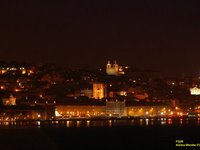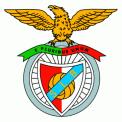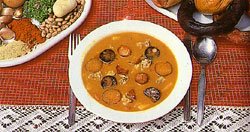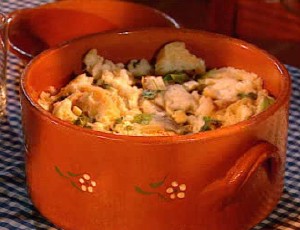LISBON BY NIGHT

The
Fado Houses, where one can savor the excellent local cooking and listen to the emotional music of Lisbon, are unique. And yet, down the hill at the open air cafes, bars and discos reflect their lights in the calm waters of the River Tagus. Usually, a night out lasts until the next morning, given that most bars don't close until 2am and discos are open until 6am or even later. The options and offers for a night out vary according to the individual's taste, but quality and fun are always guaranteed.
There are four major areas you must consider when going out at night: Av. 24 de Julho (Alcantara, mainly bars and discos), Bairro Alto (plenty of restaurants, bars and discos) , Docas (Doca de Alcantara, plenty of restaurants, bars and discos) and Parque das Nacoes (mainly restaurants and bars).
Av. 24 de Julho is a long Avenue with many bars and discos, usually very busy at night and not very far from Docas. Bairro Alto has always been a favorite among nightlife lovers, and it has cultivated its own unique style over the years, which distinguishes it from other nightlife areas around the city especially because it is located in the oldest part of Lisbon. Here you will find restaurants that stay open until quite late, with a huge selection of typical Portuguese and international cuisine.
Docas, is one of the liveliest nightlife areas in Lisbon. The scenario is beautiful and the many restaurants, bars, street cafes and discos by the river make a night out in Lisbon something really special. Finally, Parque das Nacoes, where the Expo 98 has been organized, is the most modern part of the city, with futuristic buildings and a great view to the river. Here you can find many trendy restaurants and bars with portuguese and international cuisine. On this zone of the city there is also one disco.
Bars & Discotheques
Fado Houses
Live Music
Theaters & Concert Halls
Nightlife is another important part of a city to explore . . .
Sporting
SPORTING CLUBE DE PORTUGAL
The Sporting Clube de Portugal will turn 100 years old in 2006. It is one of the major Portuguese clubs and one of the greatest of Europe in terms of the top competition modalities practised as well as to the number of European, World and Olympic titles in its history.
In football, Sporting has been National Champion 22 times, having won 13 Portugal Cups, five Super Cups and one European Cup of Cup Winners. Sporting has participated 43 times in UEFA club competitions, 12 of which were in Champions League.
Sporting is also the greatest Portuguese club in terms of athletics, handball, indoor football and table tennis. After Barcelona, Sporting holds the greatest number of European sports titles.
Sporting has around 90 thousand members and more than 350 associations of fans - Core, Affiliates and Delegations - world wide. According to opinion surveys conducted recently, there are more than three million Sporting followers around the World.
In the last ten years Sporting has been undergoing a profound structural transformation in order to become self-sufficient from a financial standpoint. This transformation has materialised in the incorporation of a Group of Enterprises that manage the Club's various sectors of activity. The Academy, the new Stadium and the new Headquarters are all a part of this modernisation project.
Important links:
http://www.sporting.pt/English/index_eng.asp
Benfica
 CLUB INFORMATION
Club: SL Benfica Inauguration: 28 February 1904 Club colors: Red and White
Palmares:
2 European champions Cup (60/61; 61/62)
1 Latina Cup (1950)
31 National championships of 1st Divisao/1st Liga
24 Portugal Cups
3 championships of Portugal (29/30;30/31;34/35)
4 Supergoblet Candido de Oliveira (79/80; 84/85; 88/89 e 2004/2005)
Official Site:SL Benfica - Official Site
Fansites:SL-Benfica.com
www.benfica-forum.com
ESTADIO DA LUZ
Name: Estadio da Luz (Estadio do Sport Lisboa e Benfica)
Inauguration: 25 October 2003
Capacity: 65,000 seatsAddress: Av. General Norton De Matos 1500, Lisboa
DIRECTIONS
The Estadio da Luz is situated in the northern part of Lisbon and is well served by the city's road system.
Car: The stadium is best reached from the Segunda Circular ring road, which connects with the national motorway network.
Metro: Take the Blue Line and get out either at Alto dos Moinhos or Colegio Militar/Luz. Both of them are very close to the stadium.
Sports are a big part of any city, and Lisbon is no exception. Benfica and Sporting are the two important clubs in this capital.
 Pasteis de Belem
If you come to Portugal, you must visit Belem and try one of the traditional cakes called Pasteis de Belem. This is one of the best things you will ever taste (custard filled phyllo-pastry) and I promise that you will not regret it.
Castle of St. George
Built over a Visigothic fortification, the Castle of St. George was raised by the Moors to protect the most important building and the population of that time.
In 1147 it was conquered by D. Afonso Henriques, king of Portugal, and it was released of his defensive mission and became a royal residence.
After the big earthquake in 1755 most of it was destroyed and was ababndoned until the Army took it to establish their headquarters till 1930.
Recently the old fortress has been rebuilt. Due to its history and the amazing views, the castle of St. George is definitely a wonderful place to spend some relaxing and fantastic moments.
The Tower of Belem
The Tower of Belem was built to pay homage to the patron saint of Lisbon - St. Vincent construction was started in 1514 and was completed in 1520, under the supervision of the kingdom's Master Builder, Diogo de Boitaca. It was a symbol of the king's prestige, and its decoration displays the Portuguese Manueline style which combined naturalistic and nautical features.
Jeronimos Monastery

The Jeronimos Monastery is usually referred to as the jewel of the Manueline style. This exclusive Portuguese style combines architectural elements from the Gothic and from the Renaissance periods, joining them with a royal and naturalist symbology, that makes it unique and honourable.
In 1496, King D. Manuel I asked the Holy Se for permission to build a large monastery on the banks of the river Tagus. The works started in 1501 and almost a century later everything was done. D. Manuel I and his descendants were buried in marble tombs located in the chancel of the church and in the transept lateral chapels.
Dedicating the monastery to the Belem Virgin was another factor that influenced the royal decision. The Jeronimos Monastery replaced the church of Saint Mary of Belem where monks of the Christ Order gave assistance to sailors passing through. For this reason, D. Manuel I chose the monks of the Saint Jeronimo Order whose functions were to pray for the soul of the king and give spiritual assistance to the sailors that left Praia do Restelo in discovery of new lands.
Because the monastery was built on the sand banks of the river Tagus, the great earthquake of 1755 had little effect on the structure.
In 1907 it was declared a National Monument and in 1984 it was classified Cultural Heritage of all Humanity by UNESCO.
There remains a lot to be said about this monument, but I leave you with one final word - AMAZING!
Carmo Ruins
This amazing gothic monument, or what's left of it, was founded by Nuno Alvares Pereira, the commander that became a member of the Carmelite Order. Its construction was finished in 1423 and at that time was the biggest church in Lisbon.The ruins of the Carmo Church, left by the devastating earthquake in 1755, are best seen from the Baixa (downtown) especially from Rossio, from Graca or from St. George's Castle. They represent centuries of history and is home to the Archaeological Carmo Museum. In this museum there is a historical collection of inestimable value with pieces from prehistory to now. So, make sure you go beyond the external wealth of these ruins and take a look inside for an enriching insight into the past!
We'll give you a few tips about what to visit while here in Lisbon . . .
Mr. Santos shares:
Bifes a Cafe (Steaks with Coffee Sauce)
INGREDIENTS:
4 sirloin steaks
4 cloves of garlic sliced thin
2dl of cream
2 bay leaves
3 tablespoons of strong coffee
Salt (to taste)
Pepper (to taste)
50 grams of margarine
1/2 teaspoon of sugar
To Make:
1-Season the steaks with the garlic and the bay leaves cut in half.
2-Heat the margarine in a frying pan.
3-Fry the steaks quickly in the margarine on a high heat.
4-Remove them when they are rare, and season them with salt and pepper.
5-Add the cream to the margarine and stir it.
6-The coffee is mixed in next.Stir until the sauce thickens.
7-Put the steaks and the juice into the sauce to reheat.
8-Remove and serve accompanied by a salad and/or French fries.
Mr. Sa hints:
Acorda a Alentejana (Dry Soup of Garlic and Coriander)
Ingredients:
4 lg garlic cloves, peeled & quartered
2-1/2 cups fresh coriander leaves (measure loosely packed; you'll need a large bunch)
2 tsp coarse salt
1/3 cup olive oil
6 med eggs
7 cups boiling water
6 cups 15-18" loaf 2-3 day old dense bread, cut into slices of 1-1/2 " chunks
Preparation:
Using a mortar and pestle, grind the garlic, coriander, and salt to paste. Transfer to a large heat-proof bowl and blend in the olive oil.
Break the eggs, slide into the boiling water, and poach 2 minutes; reserve the cooking water, keeping it at a gentle boil.
Add the bread to the bowl, sprinkle with pepper, and toss well with coriander mixture. Now pour in the reserved egg-poaching water (there will be bits of egg white in it, but no matter) and stir gently to mix. Ease the eggs on top of the soup, distributing them evenly; then sprinkle, if you like, with more minced fresh coriander.
Serve from the bowl at table, ladling into heated soup plates and topping each portion with poached egg.
Mr. Pizarro advises:
Portuguese Sweet Rice (Rice Pudding)
INGREDIENTS
4 cups milk
4 cups water
1 cup sugar (separated)
1cup rice
125 g butter
3 eggs (separated)
1 tsp. vanilla
pinch salt
cinnamon (garnish)
lemon (optional)
INSTRUCTIONS
Separate the eggs; beat the egg whites until stiff and set aside (keep cold).
Beat 1/2 cup of sugar with the yolks, and vanilla-aside .In a pot, bring to boil: the milk, water, 1/2 cup of sugar, and salt.
Slowly add rice, stirring constantly. When the rice absorbs the liquid, test for doneness, add more milk if necessary.
Add the butter, mix well stirring constantly, when the rice is fully done, remove from heat.
Very slowly beat in egg yolk mixture, fold in stiff egg whites and add grated lemon peel and a little juice if desired, sprinkle cinnamon on top.
Mr. R. Pereira guarantees:
Ovos-moles Soft Eggs - Regional Dessert
This very rich soft egg dessert is a symbol of the city of Aveiro 
INGREDIENTS
30 egg yolks
2.5dl of water
500g of sugar
cinnamon (to garnish)
TO PREPARE
Boil the sugar and water for approximately 3 minutes until it turns into light syrup. Then add the egg yolks to the sugar syrup. On a low flame mix continuously with a wooden spoon until it thickens. Garnish with cinnamon.
Mr. C. Pereira explains:
Fresh Grilled Sardines
 Ingredients: Ingredients:
Fresh Sardines (approx. 6-8 per person)
Olive Oil
Salt
Pepper
Directions:
Heat the stovetop grill.
Brush cleaned sardines (head intact) with olive oil, sprinkle with salt and pepper.
Grill a minute or two on each side.
Serve with roasted new potatoes and roasted peppers.
Mr. Neves announces:
Bife a Portuguesa (Steak the Portuguese Way)
Ingredients:
4 pieces London broil or sirloin strip 1 lg. onion, sliced
4 eggs
Marinade
1 cup white wine
1 tsp. red pepper 1 garlic clove, chopped 1 tbsp. paprika 1 tsp. salt
Preparation:
Marinate steak for 6 hours. In large skillet fry steak and onions together. After about 20 minutes, pour marinade in skillet; cook until absorbed. When done, drop raw egg over each steak and cover and cook until egg is cooked.
Mr. Mestre explains:
Tuna Steaks
INGREDIENTS (4 people):
750 g fresh tuna steaks
1 dl of white wine vinegar
2 bay leaves
4 cloves garlic
1 dl olive oil
2 onions
salt and pepper to taste
HOW TO PREPARE IT:
Marinade the tuna in the vinegar, thinly sliced garlic, salt, pepper and the bay leaves for about 3 hours. After this, fry the tuna fish in olive oil reserving marinade. When the tuna is done, remove it temporarily.
Meanwhile, slice the onions and fry them in the olive oil in which you fried the tuna.
When the onions seem glassy, put return the tuna fish to the pan and add the marinade and let it reduce.
Serve with french fries.
Mr. Malhao mentions:
Migas a Alentejana
Ingredients:
500 g of pork ribs
250 g of pork loin without bones
200 g of bacon
4 cloves of garlic
750 g of old bread
50 g of pork fat
3 red peppers (for sauce)
Salt
Orange slices for garnish
Pepper sauce
Put the raw peppers in a blender and reduce them to sauce, add half teaspoon of salt.
Chop the pork ribs and the loin into pieces.
Mix the crushed garlic and the pepper sauce together and rub into the meat.
After this, put the meat aside for 24 hours.
The next day chop the bacon into pieces and fry it with the ribs and loin in pork fat.
If necessary add some water (a few drops at a time) so the meat doesn’t burn.
As the meat becomes golden take it off of the fire.
When everything is fried, strain the fat (it will be used later).
Meanwhile cut the bread in slices and place in a bowl. Pour enough boiling water over it to moisten the bread. Then crumble the bread (with your hands) until it forms a ball.
After this, season the bread with most of the reserved pork fat (hold some aside for garnish).
Now stir the bread, form again into a ball and set it aside for 2-3 minutes until a crust begins to form.
Finally, put the migas on a serving platter with the bacon and pork and drizzle with the rest of the fat.
Garnish with orange slices.
Serve it immediately.
Serves 4
Mr. Ferreira boasts:
Fried Shrimp
Ingredients:
1kg of shrimp 2 cloves of garlic minced juice of 1 lemon
1/3 of cup of oil salt to taste
Preparation:
Temper the shrimp with garlic, lemon juice and salt and let marinate for 30 minutes. Next, put the shrimp in boiling water for 2 minutes and drain it. Heat the oil in a frying pan and fry the shrimp until it is golden.
Mr. Dias recommends:
Lisbon Steak Recipe Ingredients: 4 tenderloin steaks, cut 1/2 inch thick 2 tablespoons of butter or margarine 1 pint container of heavy cream 1/2 teaspoon of black pepper 2 tablespoons of brandy 1-8 oz. can of mushrooms salt to taste
Over medium heat , melt the butter in a 12 inch skillet. Fry the steaks turning them over after 2 minutes or so. You do not want to overcook them at this point. They will finish cooking later.
Add the cream and mushrooms to the steaks and cook for 5 minutes. Add the brandy and pepper and simmer over low heat. Simmer steaks for 5 to 10 minutes.
Served with mashed potatoes or fries. OK, to make it a little healthier a vegetable would be nice.
You can drink a delicious cold beer with this dish.
Mr. Calvo suggests:
The legend of the stone soup (sopa da pedra)
The sopa da pedra (stone soup) is a specialty from Almeirim. There is a tale that the first man who made this soup was a very tricky and wise friar. This friar was collecting things for charity when he arrived to a farmer's house and asked for a donation - nobody gave him anything. He was starving and said: I'm going to see if I can make a stone soup.
Then he picked up a stone from the ground, cleaned it and started to look at it in order to see if it was good for the soup. Everybody was laughing and making fun of him. Then he replied:
So you never ate a soup of stone? I tell you it is a very good thing.
That is one thing that we want to see, the farmers joked.
That was the answer the friar wanted to hear.
Can you lend me a pot?
They lent him a pot. He filled the pot with water and put the stone inside.
Now I will put the pot on the fire and let the water boil.
When the pot started to boil he said.
With a little lard the soup tastes better.
They went to look for a piece of lard. The friar tasted the soup and he said.
I need a bit of salt and a head of cabbage if you don't mind. It is for the poor.
Then the farmer's wife went to the vegetable garden and brought the head of cabbage. The farmer and his wife were staring at the friar.
The friar cleaned the head of cabbage and cut it into pieces and put them into
the pot.
The friar's eyes were shining and he made the last request.
Do you have a chorizo? With the chorizo the soup will taste better. Even the angels would like to taste our soup.
The wife of the farmer cut a piece of chorizo and gave him. He took a piece of bread from his tunic and heated the soup. After he finished, the stone was at the bottom of the pot and the farmer asked,
-Friar, what about the stone? What are you going to do with it?
I'm going to keep it for the next time I make the soup. Good bye and God bless you….
Sopa da pedra (Stone Soup)

Ingredients for 8 people.
- 1 litre red beans
- 1 pig's ear
- 1 red chorizo (Portuguese sausage)
- 1 black chorizo (Portuguese sausage)
- 150 gr bacon
- 750 gr potatoes
- 2 onions chopped
- 2 cloves of garlic
- 1 bay leaf
- 1 bunch coriander
- Salt and pepper
Put the beans in cold water for 6 hours.
Blanch and clean the pig's ear.
Boil the beans with the pig's ear and the chorizos, the bacon, onions, garlic and the bay leaf.
Season with salt and pepper, if it is necessary add more water.
Take out the meat when is cooked (approximately 30 minutes).
Chop the potatoes and the coriander and add.
When the potatoes and beans are ready (approximately 25 minutes) take the pot off the stove.
Take 1/2 cup beans and mash them and stir into the sauce to thicken it.
Slice the pig's ear, the chorizos and the bacon and add to the pot.
Get one small well-cleaned stone and put in the pot (actually helps to keep the soup warm).
Let the pot sit for 30 minutes or more for the flavors to mingle. Reheat before serving if necessary.
Normally we drink red wine from the wine cellar from Almeirim.
Enjoy!
If you want to know more please see:
http://www.ribatejo.com/ecos/index.html
http://www.adegacoopalmeirim.pt/adegadealmeirim.htm http://www.globalwinespirits.com/wx/es-QUINTADAALORNA/PORTAL.INDEX
There are many fabulous restaurants to choose from in Portugal's capital city, Lisbon. While you can try exotic foods from around the globe, you can also find many interesting restaurants specializing in regional Portuguese cooking.
You can also find many fabulous cooks here. Our class has put together a small sampling of what you might find. Feel free to try one of our recipes and let us know what you think.
|
|
|

















